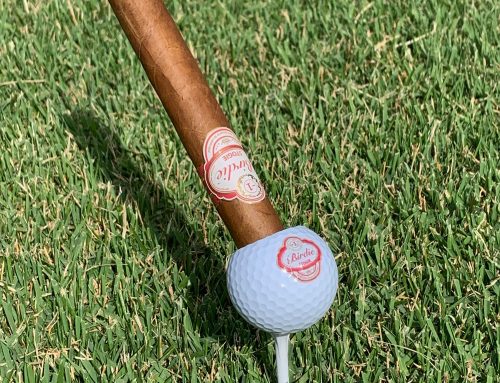We know that we have built something which is genuinely unique: almost any course that adopts our products at their point of sale sells significantly more products and generates more revenue than they were before. That means we have special; we have something people want.
Yet, almost none of the courses know that they want Greenside’s cigars. How could they? They’ve never heard of us.
So, we should be working carefully from both the product end and the market end:
- Doing a better job of providing what people want (whether they know it or not)
- Communicating the above more and more effectively (so that they know they want it)
Despite the fact that there are a handful of direct competitors and a muddled history of superficially similar cigars, we are setting out to define a new market. And that means we can’t limit ourselves to tweaking the product; we need to tweak the market too.
The best — maybe the only? — real, direct measure of “innovation” is change in human behavior. In fact, it is useful to take this way of thinking as definitional: innovation is the sum of change across the whole system, not to be confused with something which causes a change in how people behave.
It is not as eye-catching as self-driving cars or implantable chips — But, for the golf courses that adopt our products, they will inherently experience a dramatic shift in how many people enjoy cigars while being on their course; creating a dramatic increase in revenue from cigar sales.
“Because the best possible way to find product-market fit is to define your own market.”
This isn’t a new idea. There are many brands whose marketing activities or positioning has them selling something other than (and usually larger than) their product: Harley Davidson sells motorcycle riding, but it especially sells freedom and independence. Greenside sells cigars, but we especially sell added relaxation and enjoyment.
It is almost inevitable that high quality, golf specific cigars will gradually replace all the other cigars being sold at golf courses over the next 5-10 years and we should do what we can to accelerate the trend and “own it”. We are at the beginning of a transition. We have an opportunity to both define the category and push hard for the whole market’s growth.
We are asking a lot from our customers. We are asking them to give up whatever cigar they are used to smoking outside of the golf course, and spend their own money trying an unfamiliar new product they have likely never heard of.
To get people to say yes to a request that large, we need to (1) offer them a reward big enough to justify their effort and (2) do an exceptional, near-perfect job of executing and explaining.
The best way to imagine the reward is thinking about who we want our customers to become:
- We want them to become relaxed, and enjoy their golf round more than they would have without or product, or with one of our competitors products
- We want them to become less concerned with their performance on the course, and experience lower frustrations
- We want them to feel like they had some sort of added fun or improved some aspect of their game for those who save our products for a reward or celebratory achievement
- We want our customers to become masters of our product knowledge and champion our products to their friends and fellow golf mates
- At the end of all of this, we want our customers to feel satisfied.
This is what we have to be able to offer them, and it is the aim and purpose of all the work we are doing. We need to make them understand what’s at the end of the rainbow if they go with Greenside.
When you want something really bad, you will put up with a lot of flaws. But if you do not yet know you want something, your tolerance will be much lower. That’s why it is especially important for us to build beautiful, elegant and quality cigars. Every bit of grace, refinement, and thoughtfulness on our part will pull people along. Every petty irritation will stop them and give the impression that it is not worth it. That means we need to find all those petty irritations and squash them. We need to look at our own work from the perspective of a new potential customer.
There’s no point doing this to be small. We should go big, if only because there are a lot of people in the world who deserve Greenside’s cigars. Going big also means that it will have to be really, really good. But that’s convenient, since there’s also no point doing it if it is not really, really good.
To do this well, we need to take a holistic approach and not just think about a long list of individual tasks we are supposed to get through in a given week. We get 0 points for just getting a order out the door if it is not actually contributing to making the experience better for our customers, or helping them to understand our products.
Consider the teams you see in action at great restaurants, and the totality of their effort: the room, the vibe, the timing, the presentation, the attention, the anticipation of your needs (and, of course, the food itself); nothing can be off. There is a great nobility in being of service to others, and well-run restaurants (or hotels, or software companies) serve with a quality that is measured by its attention to detail. This is a perfect model for us to emulate.
Ensuring that the pieces all come together is not someone else’s job. It is our job, no matter what your title is and no matter what role you play. The pursuit of that purpose should permeate everything we do. The pursuit of perfection.

